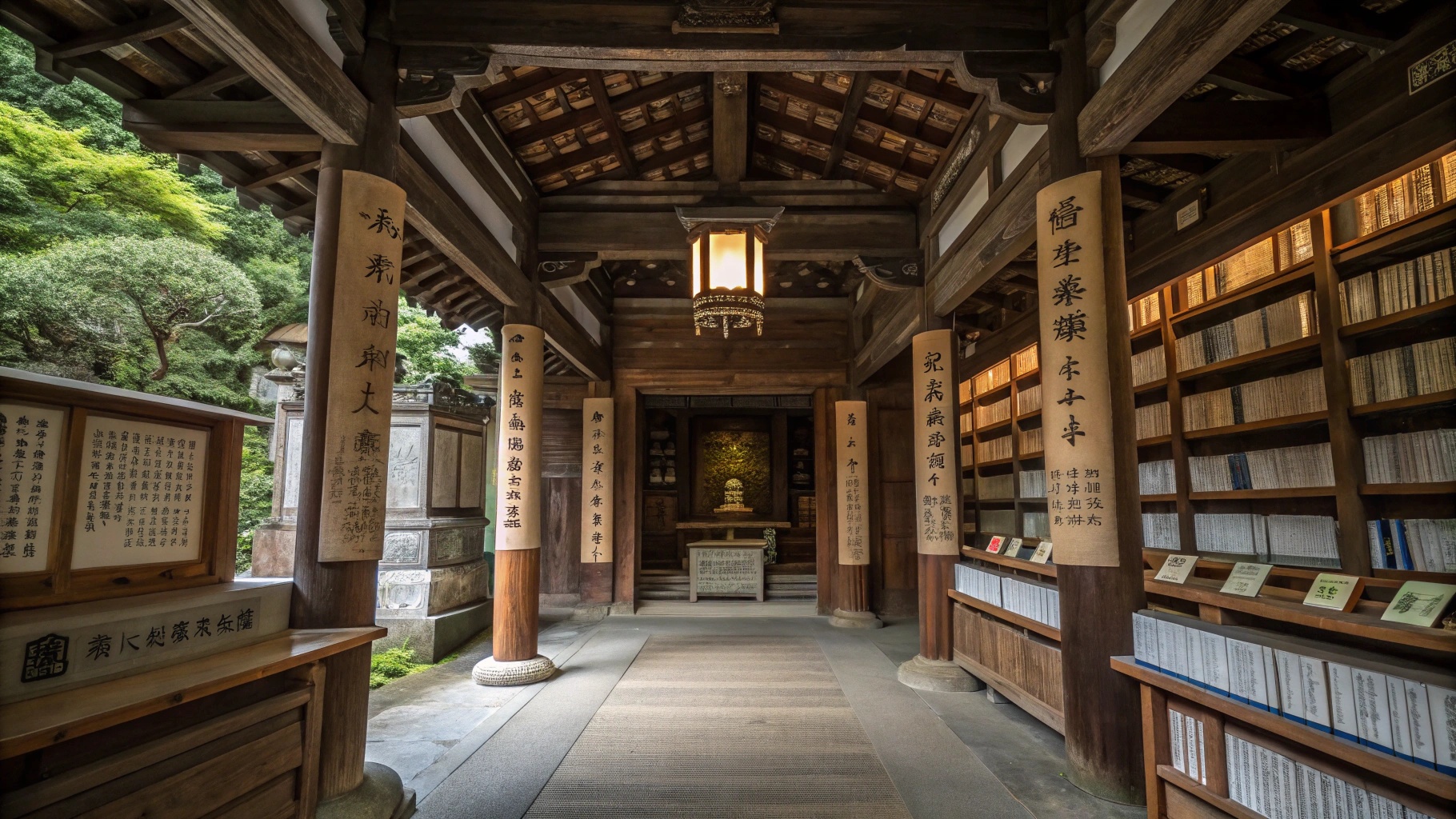

The Whispering Archive Shrine
A sacred library where forgotten stories and silent knowledge are protected.
This unique shrine resembles a vast, ancient library. Its hallowed halls are lined not with statues, but with countless scrolls and books, each containing a story or a language in danger of being lost.
History of the Shrine
The shrine was founded by a wandering scholar-monk who was heartbroken by the loss of knowledge he witnessed in his travels. He saw ancient traditions fading, local dialects disappearing, and oral histories dying with their last speakers. He came to believe in 'kotodama', the Shinto concept that a divine spirit or power resides within words themselves. To him, a forgotten story was not just a lost narrative, but a homeless spirit.
He dedicated his life to creating a sanctuary for these spirits. He began collecting forgotten folk tales, transcribing the last songs of dying languages, and saving abandoned manuscripts from being destroyed. He built a structure, more library than shrine, to house them. He believed that by preserving the words, he was giving shelter to their 'kotodama'. The shrine grew not through wealth, but through the contributions of other scholars, poets, and historians who shared his vision.
The Enshrined Kami
The kami of this shrine is not a single, personified deity, but the ancient and powerful concept of 'Kotodama' itself. This is the belief that words hold a spiritual power, that the act of speaking or writing can affect the world, and that each story, poem, and even name has a spirit.
This shrine venerates that power directly. It is a place to pray for the right words when they are needed most, for the truth to be revealed through diligent research, for the preservation of culture against the erosion of time, and for the wisdom of the past to be carried safely into the future. It is the patron shrine of librarians, archivists, writers, linguists, and all who believe in the power of the written word.
What to See
The shrine is a magnificent circular wooden structure, designed to resemble an ancient scroll repository. The air inside smells of old paper, ink, and wood. There are no idols. The central object of worship, the 'goshintai', is the 'Hajimari no Monogatari' (The First Story), a single, ancient, unreadable scroll that is said to contain the first story ever told. The walls are lined with floor-to-ceiling shelves holding thousands of scrolls and books.
Worship here is a quiet, scholarly act. Visitors do not clap or ring bells. Instead, they select a book from a special offering shelf, sit in a quiet alcove, and read for a while, 'listening' to the spirit of the story. To make a wish (usually for help in their own research or writing), they write it on a slip of paper and insert it as a bookmark into one of the archive's volumes. As an offering, scholars who have successfully completed their work will donate a copy of their own published book to the archive, adding a new voice to the silent chorus.
Major Festivals
The 'Mushiboshi-no-Gi' (Airing the Books Ritual) is the shrine's most important event. Once a year, in the driest part of autumn, all the ancient scrolls and books are carefully taken outside and unrolled or opened in the sun and air to prevent mold and insect damage. Hundreds of volunteers work in silent reverence. This practical act of preservation is the shrine's highest form of worship, ensuring the physical survival of the words that house the spirits. It is a beautiful sight, with fields of ancient texts basking in the autumn sun.
Support The Whispering Archive Shrine
Your participation helps preserve this sacred site for future generations. Every digital offering contributes to real shrine preservation efforts across Japan.
By making an offering, you become part of a global community honoring Japanese spiritual traditions and supporting the cultural heritage that has been cherished for centuries.